Included FREE items
 Cannabis Grow guide by Royal Queen Seeds
Cannabis Grow guide by Royal Queen Seeds
- Growing cannabis step by step
- Cannabis growing basics
- Choosing your seeds
- How to germinate seeds
- The cannabis vegetative stage
- The cannabis flowering stage
- Harvesting cannabis
- Trimming, drying, and curing
- Choosing pots and soil
-
Growing indoors
- A Complete Overview Of Growing Cannabis Indoors
- Cannabis Cultivation Tips: How To Set Up Indoor Grow Lights
- How Many Cannabis Plants Can You Grow Per Square Metre?
- Indoor Cannabis Growing: Relative Humidity and Temperatures
- Hydroponics Cannabis Growing Guide (with diagrams)
- Cannabis Micro Growing: Growing Great Weed in Tiny Spaces
- Growing outdoors
- How to grow autoflowering cannabis
- Cannabis nutrients and pH
- Cannabis troubleshooting: Nutrients
-
Cannabis troubleshooting: Growing
- Cannabis Seed Germination — Troubleshooting Guide
- How to Deal With Pythium (Root Rot) in Cannabis Plants
- Slow Cannabis Plant Growth And What You Can Do About It
- How to Prevent and Fix Stretching in Cannabis Seedlings
- Watering Your Cannabis: How To Fix Over And Underwatering
- Understanding Male, Female, And Hermaphrodite Cannabis
- Identifying and Treating Common Cannabis Ailments
- How To Revive a Sick Cannabis Plant
- How to Avoid Mouldy Weed During Drying and Curing
- How to Prevent and Treat Dry and Crispy Cannabis Leaves
- What Cannabis Leaves Can Tell You
- Yellow Cannabis Leaves
-
Cannabis Strains Grow Report
- HulkBerry Automatic Grow Report
- Blue Cheese Auto Grow Report
- Purple Punch Automatic Grow Report
- Triple G Automatic Grow Report
- Do-Si-Dos Automatic Grow Report
- Green Gelato Automatic Grow Report
- Haze Berry Automatic Grow Report
- Purple Queen Automatic Grow Report
- Cookies Gelato Automatic Grow Report
- Sherbet Queen Automatic Grow Report
- Sweet Skunk Automatic Grow Report
- Medusa F1 Grow Report
- Cannabis plant training
-
Weed growing tips
- The Cannabis Plant Anatomy
- How to preserve seeds
- How Much Sunlight Do Outdoor Cannabis Plants Need To Grow?
- How to Control and Prevent Stretching in Cannabis Plants
- How And When To Transplant Your Cannabis Plants
- My Cannabis Plants Are Growing Too Tall: What Should I Do?
- Should You Worry About Purple Or Red Cannabis Stems?
- What To Do When Your Indoor Cannabis Won’t Flower
- How To Protect Your Cannabis Plants From Heat Stress
- How To Tell If Your Female Cannabis Plant Has Been Pollinated
- Growing Medical Marijuana
- Bud Washing: How to Clean Your Weed
The Best Companion Plants For Your Cannabis Garden
.jpg)
Learn how to use these cannabis companion plants in your garden.
Contents:
Companion plants serve as a natural way to protect your precious cannabis crop from pest invasions and some diseases. These ally species attract predatory insects to the garden that can clear up detrimental species in no time.
Placing them between your cannabis may also help to break the spread of mould and other fungi that can ruin harvests. Many species also improve soil health by enhancing soil structure and fixing nitrogen from the atmosphere.
Not only do companion plants protect your grow, but they also raise the health of your entire garden by contributing to biodiversity. They’ll attract pollinator species to help out with your vegetable patch, too. They also boast their own uses. Harvest companion plants at the end of the season as ingredients for meals and herbal teas.
Check out some of the most popular and effective companion plants for cannabis below.
Cerastium
Cerastium tomentosum, otherwise known as dusty miller, grows in a mat-like formation. The fast-growing plant spreads across the surface of the soil and acts as a cover crop. It helps retain moisture and protects microbial life from UV rays.
Directly sow seeds into or around garden beds in early spring, and don’t cover them with soil. Aim to scatter seeds over a well-draining medium in an area that receives full sun—plants thrive in south-facing or west-facing positions. They’ll tolerate a wide pH range, although cannabis prefers between 6.0 and 7.0.
The seeds will germinate after 14–21 days. After seedlings have become fully established, thin them out, so there’s 20cm between each plant. They’ll reach maturity within a brief window of 40 days, hitting a maximum height of 25cm. Cerastium's small blossoms grow no larger than 2cm across and make an appearance in early summer, emanating a very light and sweet aroma.
After flowering, cut these plants back. Use them as a mulch layer or add them to the compost pile. The root mass of this hardy deciduous plant will survive underground at temperatures below -20°C and grow back next year.
How to use in your cannabis garden:
- Where: Use as a cover crop inside garden beds and containers.
- When: February

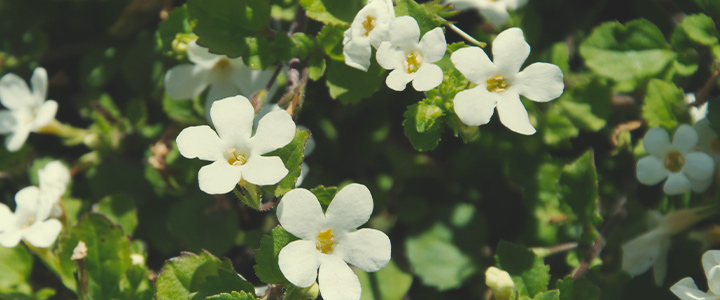
Sunflower
These towering giants add some serious beauty to any garden, growing to 3m in height and boasting bright yellow flower heads. They’ll help protect your cannabis plants against aphids, whiteflies, slugs, and snails by drawing their attention away.
Sow seeds directly into garden beds and pots. They thrive in moist but well-draining soil, full sun, and sheltered spots that protect them from harsh winds. Sunflowers release an allelopathic chemical into the soil that can inhibit the growth of nearby plants—use them as barriers and borders.
After seedlings emerge, thin them out to 60cm apart. They’ll start flowering around 60–95 days after germination. After the flower heads fill up with seeds, you have two options. You can either harvest these delicious treats or leave them to attract birds that will also keep pest insect populations down. Sunflowers do not have a distinct scent.
How to use in your cannabis garden:
- Where: Use to create barriers, windshields, and shade cover at the borders of garden beds or in close proximity to containers.
- When: March

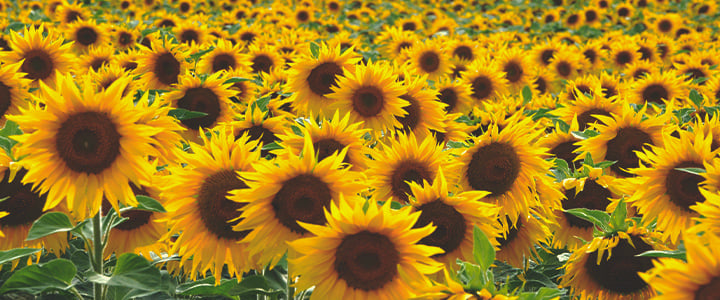
Marigold
Marigold—Calendula officinalis—produces gorgeous bright-orange flowers and aromatic leaves. These blossoms work to mesmerise aphids and divert them away from your cannabis crop. This fast-growing plant grows either as an annual or biennial and thrives all season until the first hard frost lands its blow. Marigold will tolerate poor soil but prefers well-draining soil of chalky, loamy, or sandy consistency.
Sow seeds directly into garden beds and pots during late spring. Thin to 20cm apart for smaller plants, or 30cm to let them reach their true size. The plant reaches a peak height of 50cm, likes partial sun, and sits comfortably below the canopy of a polyculture.
Deadhead flowers throughout the season to encourage plants to increase their floral output. Save the flowers to make your own cosmetics, including balms and extracts.
As well as attracting certain insects away from cannabis plants, they repel others from the garden with their pungent scent. Pests such as white cabbage flies and cabbage moths—that would otherwise munch on your cannabis plants—can’t stand them.
How to use in your cannabis garden:
- Where: Interplant between cannabis plants in garden beds using recommended spacing. Place 1–2 plants alongside cannabis in large containers.
- When: February–April

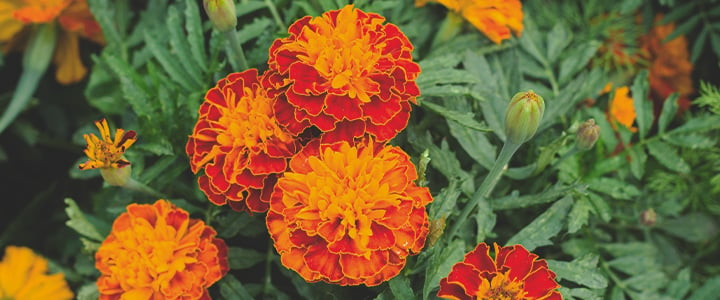
Alfalfa
Easy to grow and effective at improving the soil, alfalfa serves as a reliable and attractive companion plant. As a legume, the species works with bacteria in the soil to draw in nitrogen from the atmosphere—an essential nutrient that drives proper growth. Inoculate seeds with nitrogen-fixing bacteria before sowing to guarantee this effect.
Alfalfa also increases water penetration in the growing medium, keeping the root system hydrated and boosting the turgidity of your plants. Otherwise known as Medicago sativa, this deep-rooted perennial will add amazing structure to your soil.
Alfalfa roots very fast, so you only need to scatter seeds on the surface of the soil. Scatter seeds in spring (April to May) in cool regions, and in autumn in warmer climates. You’ll see sprouts emerge in around ten days. Thin them out as needed to avoid overcrowding.
The species prefers a slightly warmer climate and boasts impressive drought resilience. It thrives in full sun and slightly acidic to neutral soil. When thinning out the seeds, be sure to keep the sprouts; they provide a great source of vitamins and minerals and go down well in a salad.
How to use in your cannabis garden:
- Where: Sow as a cover crop in garden beds and pots.
- When: April–July

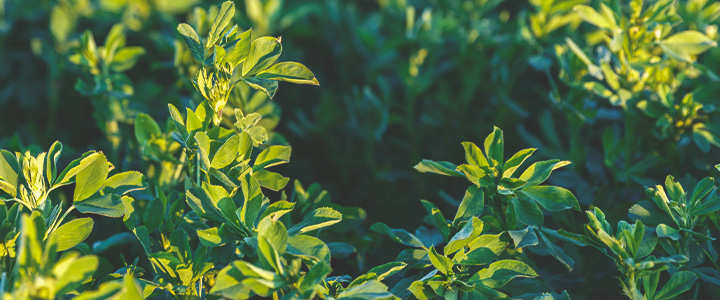
Red Clover
This perennial and bushy plant also works with nitrogen-fixing bacteria in the soil to pull in high quantities of the element from the atmosphere. Get ready for strong, healthy, and large cannabis plants.
Red clover puts out stunning red-pink pom pom flowers that will attract pollinator species to your garden. Sow seeds in early spring in cooler climates, and autumn in warmer areas. Sow seeds 1cm deep and 5cm apart in loamy soils with a slightly acidic pH. Red clover requires full sun to grow optimally and does well around the edges of garden beds and next to potted cannabis plants.
How to use in your cannabis garden:
- Where: Sow directly into pots and beds as a living mulch ground cover.
- When: April

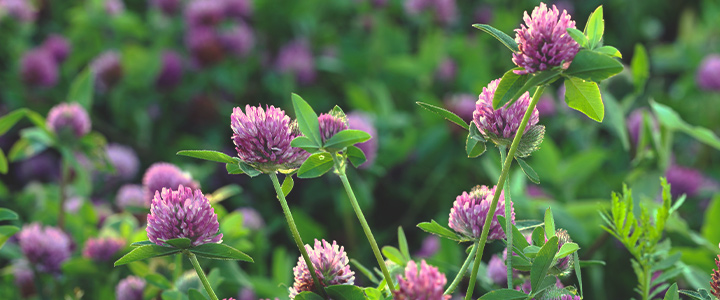
Chervil
Chervil serves as an excellent culinary herb and also helps to keep damaging insects at bay. Aphids are attracted to the mild aniseed scent, which distracts them from messing with your weed.
Sow directly into compost-rich soil as early as March. The seeds will germinate in around one week and reach the seedling phase shortly after. Thin them out to 30cm apart. Chervil tolerates both direct sun and partial shade but likes constant moisture.
Chervil notoriously self-seeds and has the ability to overrun garden beds. Remove flower heads on time to avoid a complete takeover. You’ll have a supply of young leaves ready to harvest in around 9 weeks. Throw them in salads and fish dishes for a pleasant kick.
How to use in your cannabis garden:
- Where: Plant in separate containers next to your cannabis pots, or interplant in raised beds and greenhouses.
- When: March–August

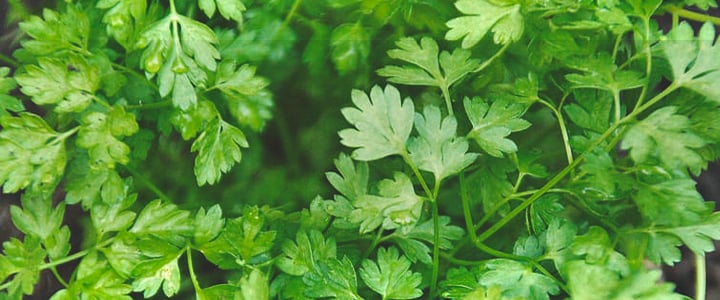
White Clover
White clover provides a pest-resistant living mulch that locks in moisture and boosts nitrogen levels in the soil. The creeping perennial will work its way across the surface of garden beds without any guidance.
As well as improving soil health, this living mat will suppress weeds (the bad kind) and save you a great deal of time in the garden. Inoculate the seeds with rhizobia bacteria to ensure your plants will fix nitrogen. Sow seeds in early spring, ideally into slightly acidic soil rich in phosphorus and potassium in a sunny area of the garden.
Keep the soil constantly moist to prevent white clover from drying out. A simple drip irrigation system will do a great job of keeping your beds hydrated.
Your plants will produce sweet-smelling white and pink puffball flowers between May and October. These stunning blossoms attract butterflies and bees. Small amounts of the leaves and flowers are great to chop into salads or sauté alongside chicken or a vegan alternative.
How to use in your cannabis garden:
- Where: Sow as a living mulch around the base of your cannabis plants. Works especially well in large fabric pots.
- When: March–April

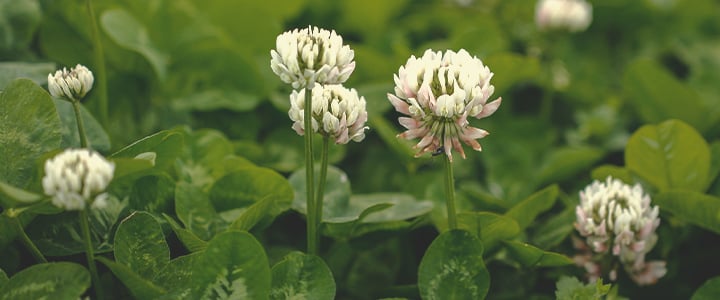
Peppermint
Peppermint grows so easily that you’ll have to work to keep it from taking over. For this reason, you should only grow peppermint in containers. The pungent aroma helps to deter pests such as ants, fleas, aphids, and even mice, and it will help to mask the obvious skunky smell of weed, too.
After sowing these seeds once in early spring, you’ll be able to harvest the flavourful leaves numerous times throughout the season. Cultivate them in rich and well-draining soil in a sunny or partially shady spot. Plants will germinate 10–16 days after sowing and flower in late summer.
Cut these plants back after flowering. The perennial species will keep providing you with tasty leaves—ideal for herbal teas—year after year.
How to use in your cannabis garden:
- Where: Plant in isolated pots to prevent them from growing out of control
- When: February–June

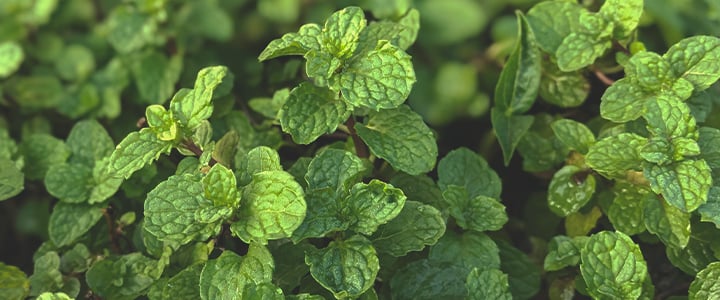
Lavender
Richly aromatic flowers and gorgeous shades of purple—lavender will light up your garden beds. These eye-catching shrubs act like botanical traffic lights that divert pest insects away from your precious weed. What’s more, they’ll also bring in large numbers of friendly pollinators.
Lavender enjoys a warm and Mediterranean environment, although it will still grow in the cooler north. Fill propagator cells with rich compost and sow your seeds; cover with a light dusting of vermiculite. Keep them at between 21–25°C, and they’ll pop through the soil in the next 21 days. Transplant them into garden beds or pots with free-draining soil and expose them to as much sun as possible, leaving a 30cm gap between plants.
Don’t let that gorgeous herbal smell tease you all season long. Prune your plants back at the end of the season and collect the flower heads. Dry them out to make a soothing and tasty tea.
How to use in your cannabis garden:
- Where: Plant in borders of garden beds and in pots next to cannabis containers.
- When: February–July

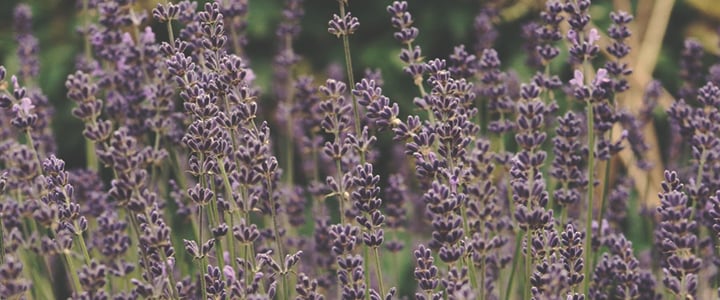
Coriander
This fast-growing multipurpose herb will add a satisfying source of flavour to your garden. Taste aside, coriander generates a pungent aroma that deters bad bugs while drawing in beneficial species.
Damaging spider mites, potato beetles, and aphids will happily bypass your cannabis garden after catching a whiff of this herb. In contrast, parasitic wasps are rather fond of the smell and will help keep pest populations at bay.
Being a delicate plant, coriander dislikes being transplanted. Sow seeds directly into their final spot in the garden at a depth of 1cm. Do so in full sun between April and July, and expect to see them emerge 12–21 days later. Thin them to 25cm apart.
You'll harvest the flavourful leaves around 60–75 days after sowing. Add them to soups alongside some homemade cannabutter for a chilled-out afternoon.
How to use in your cannabis garden:
- Where: Interplant with your cannabis in beds or large fabric containers. Grow in separate pots if using small containers.
- When: March

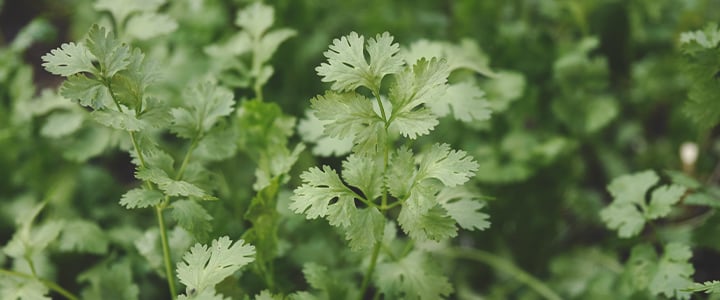
Chamomile
Pretty, aromatic, and functional. Why wouldn’t you want this stunning flower growing alongside your cannabis plants? Being extremely easy to grow, chamomile will bounce back in the same spot year after year to fulfil its companion plant duties.
Sow chamomile along the borders of raised beds and in large pots alongside cannabis plants. The herb will boost the essential oil production and turgidity of nearby plants while deterring irritating flies and mosquitoes.
Sow seeds directly in well-draining soil in full sun from April onwards. After 20–30 days, thin your plants out to 15cm apart.
Don’t leave your chamomile flowers behind after your cannabis harvest. The leaves and flowers make a delicious and soothing tea, and a great ingredient in a homemade skin wash.
How to use in your cannabis garden:
- Where: Grow as a border crop/insect buffer surrounding beds and greenhouse entrances.
- When: Start indoors 6 weeks before last frost date

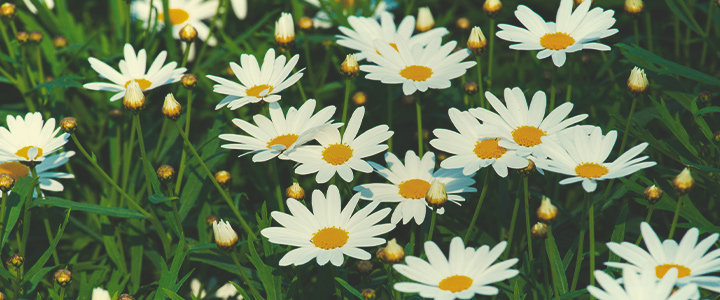
Yarrow
Yarrow produces gorgeous canopies of densely packed white flowers. Sure, it makes a great companion plant, but its looks alone are a superb reason to include this specimen in your garden.
Anecdotal gardening reports state that yarrow helps to boost the essential oil production of nearby plants. Although the product of gardening folklore, if true, the plant may bring out the full potential of your cannabis genetics. Yarrow also attracts an army of predatory insects with an appetite for aphids, such as ladybugs and aphid lions.
Sow seeds into well-draining soil in a relatively dry spot under warm sun. Yarrow dislikes wet ground and will perform poorly if introduced to water-logged soil. Space to 60cm apart when seedlings emerge around 21 days after germination. Use your yarrow plants to make a nice tea at the end of the growing season.
How to use in your cannabis garden:
- Where: Grow directly beside cannabis plants—the two thrive together.
- When: Sow 8 weeks before last frost date

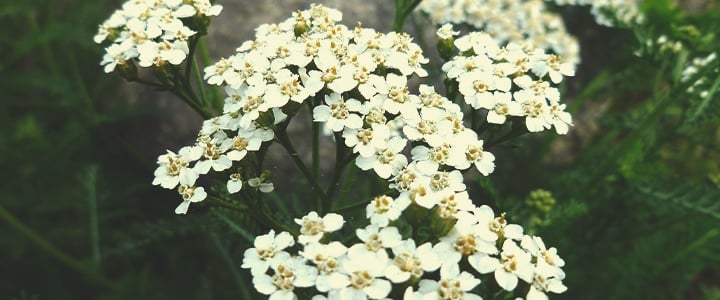
Dill
Dill equals delicious. Seriously. You’ll recognise the aniseed-like taste from chicken recipes, soups, salads, and pickles. Regardless of whether you grow cannabis or not, you need some dill plants in your life.
This member of the celery family looks beautiful when interplanted between cannabis specimens, and works to provide protection against certain caterpillar species and spider mites throughout the growing season.
Sow seeds directly into soil right after the last frost. In cooler areas, sow them 1cm deep and then thin seedlings to 30cm apart. In warmer climates, simply sow seeds directly on top of free-draining seed compost. Aim to grow your dill in full sun, but keep the soil moist. Dill tends to shoot to flower due to stress caused by dry soils. Harvest the frilly foliage 7 weeks after sowing and add to salads and soups.
How to use in your cannabis garden:
- Where: Directly between or beside your cannabis plants.
- When: March–July

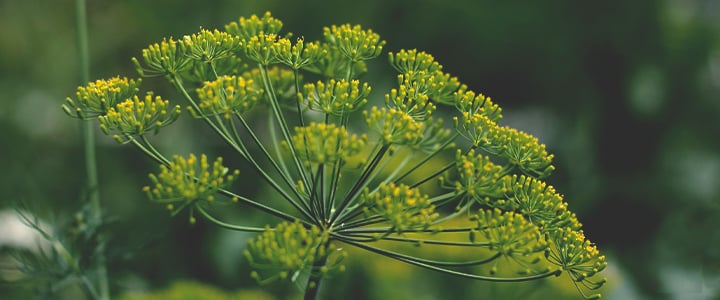
Lemon Balm
Lemon balm (Melissa officinalis) will return to your garden every single year. The hardy and versatile herb survives underground during winter frosts and bounces back with full force in spring.
This herbal powerhouse and member of the mint family will draw pollinator species into your garden to look after your vegetables. The plant also keeps mosquitoes away, making gardening a much more pleasant experience.
Almost too vigorously, lemon balm will happily take over an entire bed. Sow seeds into pots to prevent unwanted growth. Scatter them on top of potting soil and cover lightly with seed compost. Thin out to 30cm and position in full sun or partial shade.
Harvest leaves throughout the growing season to make a delicious and refreshing tea. Pluck off any flowers to encourage more vegetative growth.
How to use in your cannabis garden:
- Where: Lemon balm should be confined to separate pots placed close to your cannabis plants to avoid overcrowding.
- When: March–May

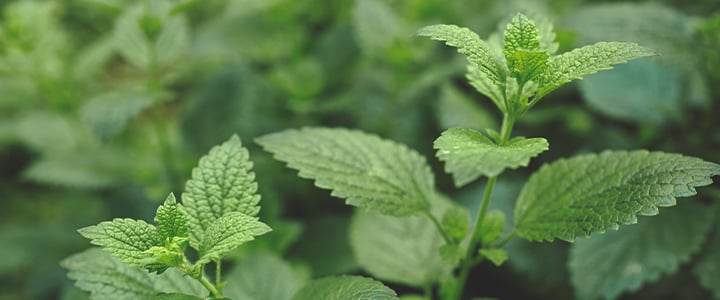
Sweet Basil
Perhaps the best aromatic herb (excluding cannabis, of course), sweet basil adds immense flavour to salads, pizzas, and pasta dishes.
Just like cannabis, people often smell basil before they see it. The plant fills the air with a powerful aroma that drives away would-be pests like aphids and asparagus beetles. It’ll also attract various pollinator species that will boost the biodiversity of your garden.
Scatter seeds into large pots containing well-draining soil. Position them in full sun and expect to see seedlings arise in the next 20 days. They prefer slightly acidic soil and rather dry conditions. Top plants and harvest leaves throughout the season to encourage fast and vigorous vegetative growth.
How to use in your cannabis garden:
- Where: In pots and beds alongside cannabis plants, especially effective alongside dill to possibly enhance terpene production.
- When: February–June

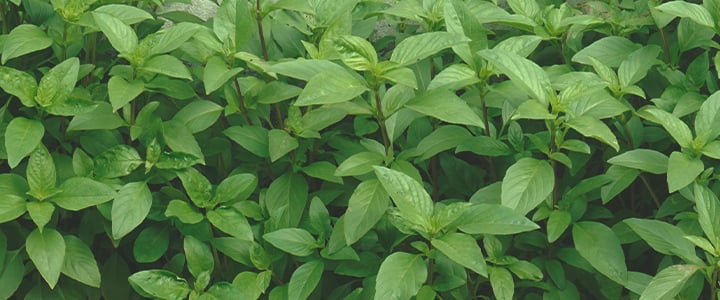
Borage
Borage provides a rich source of nutrients to humans and plants alike. The beautiful blue and nectar-rich blossoms will help your local bee population thrive. At the end of the season, use chopped plants as a mulch or add them to the compost. High levels of calcium and potassium will help your plants thrive.
Borage thrives in full sun and likes it roomy. Sow seeds into large pots from March, with each plant receiving about 30cm of room. Water regularly during dry periods to keep plants turgid and strong. Frequently harvest the cucumber-flavoured leaves throughout the season to add a refreshing touch to summer drinks.
How to use in your cannabis garden:
- Where: Side-by-side with cannabis plants to attract beneficial insects.
- When: March–May

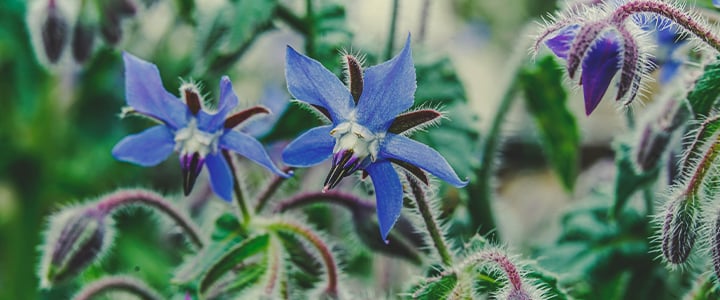
How to Germinate?
 Grow Guide Topic Finder
Grow Guide Topic Finder
- Growing cannabis step by step
- Cannabis growing basics
- Choosing your seeds
- How to germinate seeds
- The cannabis vegetative stage
- The cannabis flowering stage
- Harvesting cannabis
- Trimming, drying, and curing
- Choosing pots and soil
-
Growing indoors
- A Complete Overview Of Growing Cannabis Indoors
- Cannabis Cultivation Tips: How To Set Up Indoor Grow Lights
- How Many Cannabis Plants Can You Grow Per Square Metre?
- Indoor Cannabis Growing: Relative Humidity and Temperatures
- Hydroponics Cannabis Growing Guide (with diagrams)
- Cannabis Micro Growing: Growing Great Weed in Tiny Spaces
- Growing outdoors
- How to grow autoflowering cannabis
- Cannabis nutrients and pH
- Cannabis troubleshooting: Nutrients
-
Cannabis troubleshooting: Growing
- Cannabis Seed Germination — Troubleshooting Guide
- How to Deal With Pythium (Root Rot) in Cannabis Plants
- Slow Cannabis Plant Growth And What You Can Do About It
- How to Prevent and Fix Stretching in Cannabis Seedlings
- Watering Your Cannabis: How To Fix Over And Underwatering
- Understanding Male, Female, And Hermaphrodite Cannabis
- Identifying and Treating Common Cannabis Ailments
- How To Revive a Sick Cannabis Plant
- How to Avoid Mouldy Weed During Drying and Curing
- How to Prevent and Treat Dry and Crispy Cannabis Leaves
- What Cannabis Leaves Can Tell You
- Yellow Cannabis Leaves
-
Cannabis Strains Grow Report
- HulkBerry Automatic Grow Report
- Blue Cheese Auto Grow Report
- Purple Punch Automatic Grow Report
- Triple G Automatic Grow Report
- Do-Si-Dos Automatic Grow Report
- Green Gelato Automatic Grow Report
- Haze Berry Automatic Grow Report
- Purple Queen Automatic Grow Report
- Cookies Gelato Automatic Grow Report
- Sherbet Queen Automatic Grow Report
- Sweet Skunk Automatic Grow Report
- Medusa F1 Grow Report
- Cannabis plant training
-
Weed growing tips
- The Cannabis Plant Anatomy
- How to preserve seeds
- How Much Sunlight Do Outdoor Cannabis Plants Need To Grow?
- How to Control and Prevent Stretching in Cannabis Plants
- How And When To Transplant Your Cannabis Plants
- My Cannabis Plants Are Growing Too Tall: What Should I Do?
- Should You Worry About Purple Or Red Cannabis Stems?
- What To Do When Your Indoor Cannabis Won’t Flower
- How To Protect Your Cannabis Plants From Heat Stress
- How To Tell If Your Female Cannabis Plant Has Been Pollinated
- Growing Medical Marijuana
- Bud Washing: How to Clean Your Weed
Categories
How to Germinate?
Grow Cannabis With RQS


























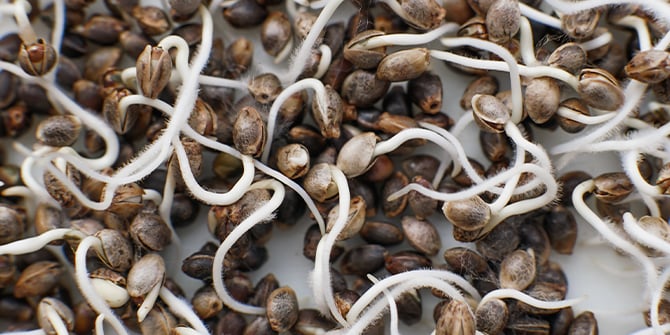
.jpg)












